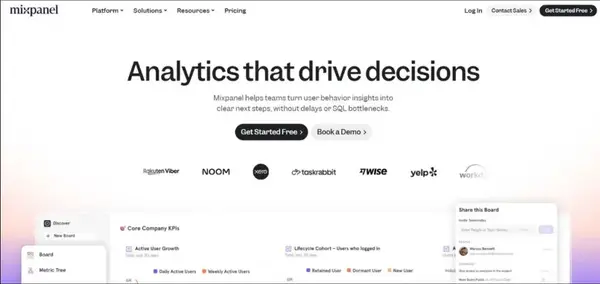UK Cyber Security Crisis 2025: The Year of Retail Ransomware and Healthcare Havoc

A comprehensive analysis of the cyber attacks, ransomware incidents, and data breaches that have defined the UK's cyber security landscape in 2025
Executive Summary
2025 has proven to be a watershed year for cyber security in the United Kingdom, marked by an unprecedented surge in sophisticated attacks that have crippled major retailers, compromised healthcare systems, and exposed critical vulnerabilities across both public and private sectors. From the devastating NHS patient safety incidents to the coordinated assault on Britain's retail giants, the cyber threat landscape has evolved dramatically, demanding urgent attention from policymakers, business leaders, and security professionals alike.
Key Statistics:
- 43% of UK businesses experienced cyber breaches in 2025
- Ransomware attacks doubled from <0.5% to 1% of businesses affected
- £990 average cost per non-phishing cybercrime incident
- 19,000 businesses estimated to have suffered ransomware attacks
- 2.1 million data points stolen in Legal Aid Agency breach
- Four young people arrested in connection with major retail attacks

The Retail Apocalypse: Scattered Spider's UK Campaign
The Perfect Storm
The most shocking development of 2025 has been the systematic targeting of Britain's most iconic retail brands by the cybercriminal group known as Scattered Spider (also tracked as UNC3944, Octo Tempest). Operating in partnership with the DragonForce ransomware-as-a-service platform, this sophisticated threat actor has brought household names to their knees through a combination of advanced social engineering and devastating ransomware deployment.
Major Retail Victims
Marks & Spencer - The £700 Million Catastrophe The attack on Marks & Spencer stands as perhaps the most damaging cyber incident to hit a UK retailer. Beginning with initial access gained as early as February 2025, attackers spent months quietly expanding their foothold before deploying DragonForce ransomware on April 24. The consequences were immediate and severe:
- 46 days of online operations disruption
- £3.8 million daily losses from halted online sales
- £700 million wiped from market value
- Complete suspension of contactless payments and click-and-collect services
- Empty shelves across physical stores
Co-op - Swift Response Prevents Disaster Co-op's experience demonstrates the importance of rapid incident response. When attackers breached their systems, the retailer's swift action to shut down VPN access and isolate systems potentially prevented a full-scale ransomware deployment. Internal communications revealed the severity of the threat, with employees advised to verify all Teams meeting attendees on camera due to concerns about compromised internal accounts.
Harrods - Luxury Brand Under Siege Even London's most prestigious department store couldn't escape the ransomware wave. Harrods publicly confirmed the cyber attack on May 1, 2025, becoming another high-profile victim in what security experts describe as an unprecedented coordinated campaign against UK retail.
The Scattered Spider Phenomenon
What makes Scattered Spider particularly dangerous is their unique composition and methodology:
Demographics and Structure:
- Many members are young, English-speaking hackers based in the UK and US
- Operates as a loose collective rather than a traditional hierarchy
- Members often unknown to each other, working through online forums
- Part of the broader "Community" or "The Com" criminal network

Attack Methodology:
- Social Engineering Excellence: Master manipulators who impersonate IT personnel
- MFA Fatigue Attacks: Bombarding users with authentication prompts until approval
- SIM Swapping: Taking control of phone numbers for bypass authentication
- Cloud-First Approach: Exploiting modern cloud infrastructure vulnerabilities
- Ransomware Partnership: Collaborating with DragonForce for final payload deployment
Economic Impact
The retail sector attacks have had far-reaching economic consequences:
- Millions in direct losses from operational disruption
- Significant market value destruction
- Supply chain disruptions affecting multiple industries
- Consumer confidence erosion in digital retail platforms
Healthcare Under Siege: NHS Cyber Security Crisis
Life-Threatening Consequences
2025 has witnessed the gravest cyber security threats to UK healthcare in modern history, with attacks directly linked to patient harm and even death. The implications extend far beyond data theft, threatening the very foundation of public healthcare delivery.
The Synnovis Catastrophe
The June 2024 ransomware attack on pathology services provider Synnovis continues to reverberate through 2025, with its true impact only now becoming clear:
Devastating Statistics:
- 10,152 acute outpatient appointments postponed
- 1,693 elective procedures cancelled
- 400GB of sensitive patient data published by attackers
- 2 cases of major harm causing long-term or permanent damage
- 11 cases of moderate harm with medium-term health impacts
- 120+ cases of minor harm from delayed treatments
- One patient death officially linked to the attack
Operational Impact:
- Blood testing services reduced to 10% capacity immediately post-attack
- Critical shortage of O-type blood across NHS hospitals
- Months of disruption across London healthcare providers
- Dialysis treatments disrupted for vulnerable patients
NHS Scotland Breaches
The March 2025 attack on NHS Dumfries and Galloway demonstrated the vulnerability of Scotland's healthcare infrastructure:
- 150,000 households warned of potential data exposure
- 3TB of sensitive data including x-rays and test results published online
- Patient and staff identifiable information compromised
- Ongoing alert for fraud attempts targeting affected individuals
Systemic Vulnerabilities
The healthcare cyber crisis has exposed fundamental weaknesses:
- 58 critical government IT systems identified with significant security gaps
- Inadequate cybersecurity investment across NHS trusts
- Vulnerable supply chain dependencies
- Insufficient incident response capabilities
Government Response and Policy Evolution
The Ransomware Crackdown
On July 22, 2025, the UK government announced comprehensive measures to combat the ransomware epidemic:
Key Proposals:
- Ban on ransom payments for public sector bodies and critical infrastructure operators
- Mandatory reporting requirements for private sector ransom payment intentions
- Enhanced penalties for facilitating ransomware operations
- Cyber Security and Resilience Bill to strengthen legal frameworks
Sector-Specific Measures:
- NHS organisations prohibited from paying ransoms
- Local councils and schools included in payment ban
- Critical infrastructure operators subject to enhanced reporting
- Software companies to be included in updated NIS Regulations
Law Enforcement Response
The government's response includes significant law enforcement action:
- Four young people arrested in connection with the Scattered Spider attacks on major retailers
- Enhanced cooperation with international partners in cyber crime investigations
- Strengthened legal frameworks under the proposed Cyber Security and Resilience Bill
- Potential reform of the Computer Misuse Act to provide clearer legal frameworks for cybersecurity professionals

Recent Arrests: Security Minister Dan Jarvis confirmed that four young people have been arrested for their suspected involvement in the damaging cyber attacks against Marks & Spencer, Co-op, and Harrods, demonstrating that UK law enforcement is taking aggressive action against cybercriminals regardless of their age or location.
Policy Implications
The government's response reflects a shift toward:
- Aggressive deterrence of ransomware business models
- Mandatory transparency in breach reporting
- Sector-specific regulations tailored to critical services
- International cooperation in cyber crime prosecution
Sector-by-Sector Analysis
Financial Services
While less publicly impacted than retail and healthcare, the financial sector has faced its own challenges in 2025:
- Continued phishing campaigns targeting banking credentials
- Supply chain attacks affecting fintech providers
- Regulatory scrutiny increasing post-major breaches in other sectors
Education
Educational institutions have experienced varied levels of cyber threats:
- 40% of further and higher education institutions suffered negative outcomes from breaches
- 30% experienced weekly attacks (compared to 9% for primary schools)
- Growing emphasis on compliance and accreditation requirements
- Increased staff awareness following high-profile incidents
Legal Aid Agency - The Justice System Under Attack
The April 2025 cyber attack on the Legal Aid Agency (LAA) represents one of the most severe breaches of government data in recent UK history, exposing the vulnerability of critical public services:
Devastating Data Exposure:
- 2.1 million data points potentially compromised according to attackers' claims
- 15 years of sensitive records dating back to 2010 exposed
- Complete service shutdown forcing the LAA offline indefinitely
- Highly sensitive personal information including criminal records, financial data, and national ID numbers
Scope of Compromised Data:
- Contact details and addresses of legal aid applicants
- Dates of birth and national identification numbers
- Criminal history and employment status information
- Financial data including contribution amounts, debts, and payments
- Legal aid provider payment information and financial details
Operational Impact:
- Complete suspension of online legal aid services
- Contingency measures implemented for urgent legal support needs
- Thousands of legal aid providers affected across England and Wales
- Court injunction obtained to prevent data sharing
- Ongoing investigation by National Crime Agency and NCSC
Critical Infrastructure
Energy, transport, and utilities sectors have faced mounting pressure:
- Southern Water's £4.5 million ransomware costs highlighting infrastructure vulnerability
- Increasing nation-state activity targeting critical systems
- Enhanced monitoring and protection requirements
The Threat Actor Landscape
Emerging Groups and Tactics
DragonForce Ransomware-as-a-Service:
- White-label ransomware services enabling widespread distribution
- Aggressive victim intimidation including recorded phone calls
- Global reach with victims spanning multiple continents
- Partnership model with initial access brokers like Scattered Spider
International Implications:
- Russian-speaking Qilin group behind NHS attacks
- Iranian "Homeland Justice" group targeting Albanian infrastructure
- Chinese APT groups focusing on energy and oil sectors
- North Korean interview-based targeting campaigns

Evolution of Attack Methods
Technical Innovation:
- AI-powered phishing campaigns becoming mainstream
- Sophisticated impersonation techniques bypassing traditional detection
- Cloud-native attack paths exploiting modern infrastructure
- Supply chain compromise as primary attack vector
Social Engineering Enhancement:
- Deepfake voice and video technology in vishing attacks
- Highly targeted spear-phishing with personal information
- Insider threat recruitment through financial incentives
- Multi-vector attacks combining technical and human elements
Economic and Social Impact
Financial Consequences
The 2025 cyber crisis has imposed significant costs across the UK economy:
Direct Costs:
- Average £990 per business for non-phishing cybercrime
- £5,900 average cost for cyber-facilitated fraud incidents
- Millions in operational disruption for major retailers
- Healthcare system costs from delayed treatments and incident response
Indirect Costs:
- Market value destruction in publicly traded companies
- Insurance premium increases across all sectors
- Regulatory compliance costs rising significantly
- Consumer confidence erosion affecting digital adoption
Social Consequences
Beyond financial impact, the cyber crisis has created broader social challenges:
- Patient safety compromised by healthcare system attacks
- Consumer trust eroded in digital retail and banking services
- Educational disruption affecting student learning outcomes
- Public service delivery impacted by local government attacks
Defensive Measures and Lessons Learned
Best Practices Emerging from 2025
Immediate Response Protocols:
- Rapid system isolation to prevent lateral movement
- Pre-positioned incident response teams and playbooks
- Regular backup testing and offline storage verification
- Clear communication channels during crisis situations
Long-term Resilience Building:
- Zero-trust architecture implementation
- Enhanced employee training focusing on social engineering
- Third-party risk management programs
- Regular penetration testing and vulnerability assessments
Government Guidance Evolution
The National Cyber Security Centre has updated its guidance based on 2025 incidents:
- Enhanced focus on supply chain security
- Sector-specific threat intelligence sharing
- Improved incident reporting mechanisms
- Strengthened international cooperation frameworks
Looking Forward: Threats and Predictions
Emerging Threat Vectors
AI-Powered Attacks:
- Sophisticated deepfake technology enabling unprecedented impersonation
- Automated vulnerability discovery and exploitation
- Personalized phishing campaigns at massive scale
- Adaptive malware that evolves to evade detection
Supply Chain Evolution:
- Increased targeting of managed service providers
- Cloud infrastructure compromise affecting multiple clients
- Software supply chain poisoning becoming more common
- Critical infrastructure interdependency exploitation
Regulatory and Policy Trends
Expected Developments:
- Stricter liability frameworks for negligent cyber security
- Enhanced international cooperation agreements
- Sector-specific cyber resilience requirements
- Mandatory cyber insurance for critical sectors
Industry Transformation
The 2025 cyber crisis is likely to accelerate several industry trends:
- Cyber security as a board-level priority across all sectors
- Increased investment in defensive technologies and personnel
- Enhanced collaboration between public and private sectors
- Regulatory harmonization at international level
Recommendations for Organizations
Immediate Actions
- Conduct comprehensive risk assessments focusing on high-impact, low-frequency events
- Implement zero-trust network architectures to limit lateral movement potential
- Enhance employee training programs with emphasis on social engineering awareness
- Establish incident response partnerships with specialized security firms
- Review and test backup and recovery procedures regularly
Strategic Investments
- Advanced threat detection and response capabilities
- Cyber security insurance with appropriate coverage levels
- Third-party risk management programs and vendor assessments
- Continuous security monitoring and threat intelligence feeds
- Executive and board-level cyber security education
Regulatory Compliance
- Prepare for enhanced reporting requirements under new legislation
- Develop policies addressing ransom payment scenarios
- Establish compliance frameworks for sector-specific regulations
- Implement data protection measures exceeding minimum requirements
- Create transparency protocols for stakeholder communication during incidents
Conclusion
The 2025 cyber crisis has fundamentally altered the threat environment facing UK organizations. The convergence of sophisticated threat actors, vulnerable digital infrastructure, and high-stakes targets has created a perfect storm of cyber risk that demands immediate and comprehensive response.
The attacks on major retailers have demonstrated that no organization, regardless of size or reputation, is immune to modern cyber threats. The healthcare breaches have shown that cyber attacks can literally be matters of life and death. The Legal Aid Agency breach has exposed how even fundamental justice system infrastructure can be compromised, affecting millions of vulnerable citizens seeking legal assistance.
Security Minister Dan Jarvis's warnings about the "very significant" volume of attacks facing the UK underscore the urgency of the situation. His emphasis that cyberattacks are "destroying businesses and ruining lives" reflects the human cost beyond financial metrics. The government's response, while comprehensive, faces the challenge of keeping pace with rapidly evolving threats.
As we move forward, the lessons of 2025 must inform a new approach to cyber security that prioritizes resilience, collaboration, and proactive defense. The cost of inaction has been measured not just in financial terms, but in human suffering and societal disruption.
The cyber security community, government agencies, and private sector organizations must work together to build a more secure digital future. The stakes have never been higher, and the time for action is now.
This analysis is based on publicly available information and official government reports current as of July 2025. Organizations should consult with qualified cyber security professionals for specific guidance tailored to their risk profile and operational requirements.









